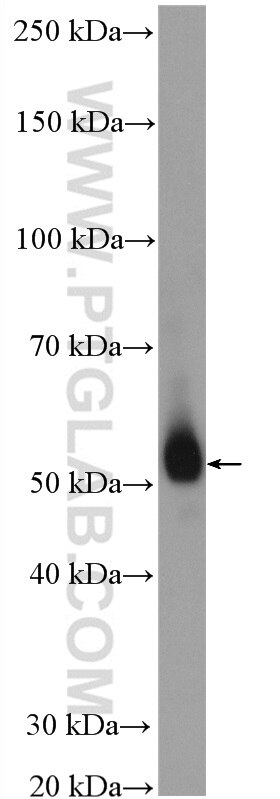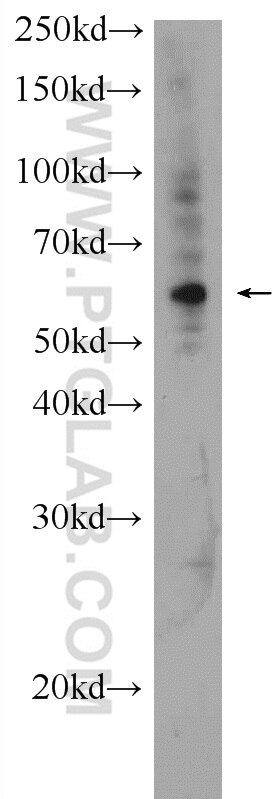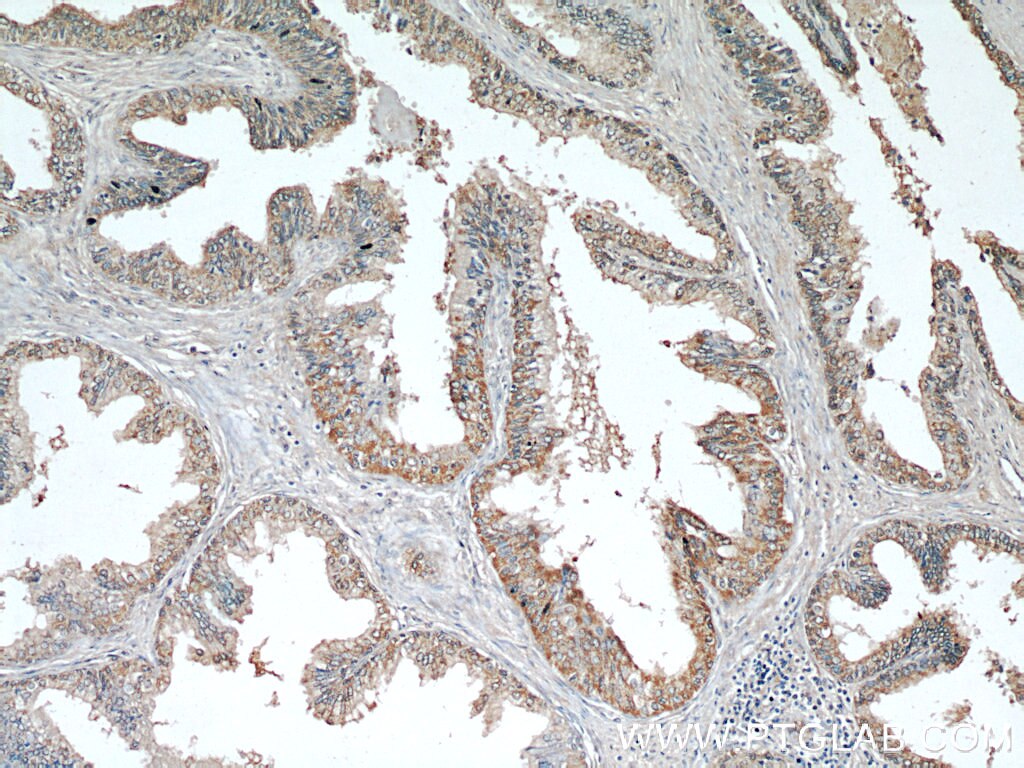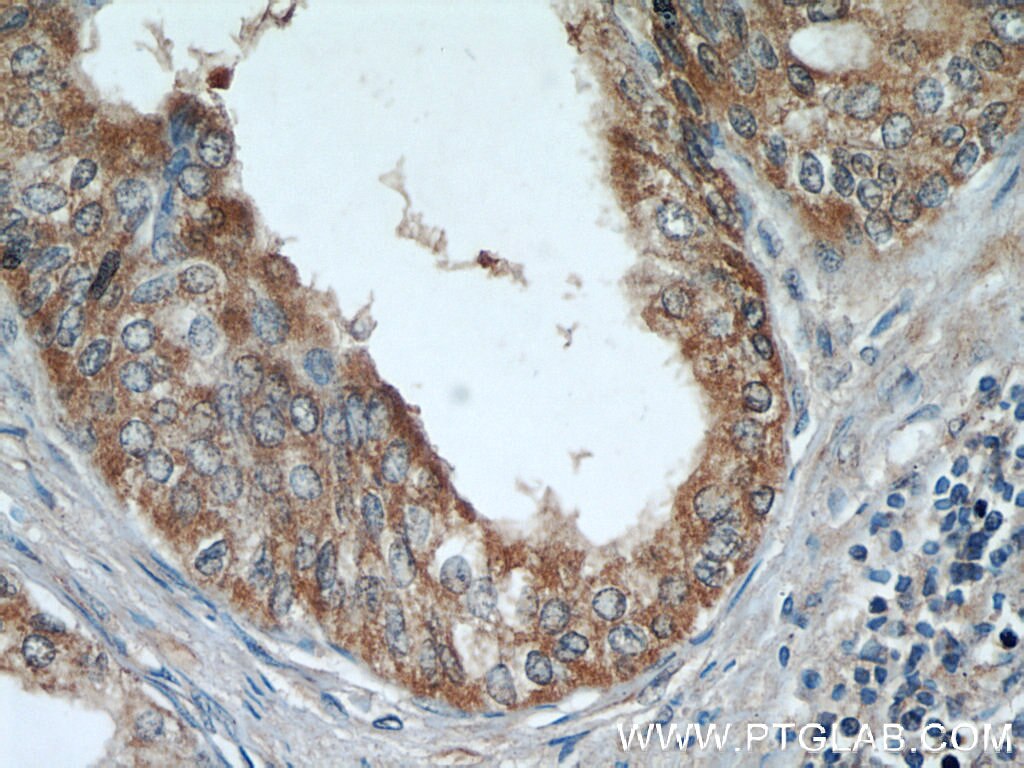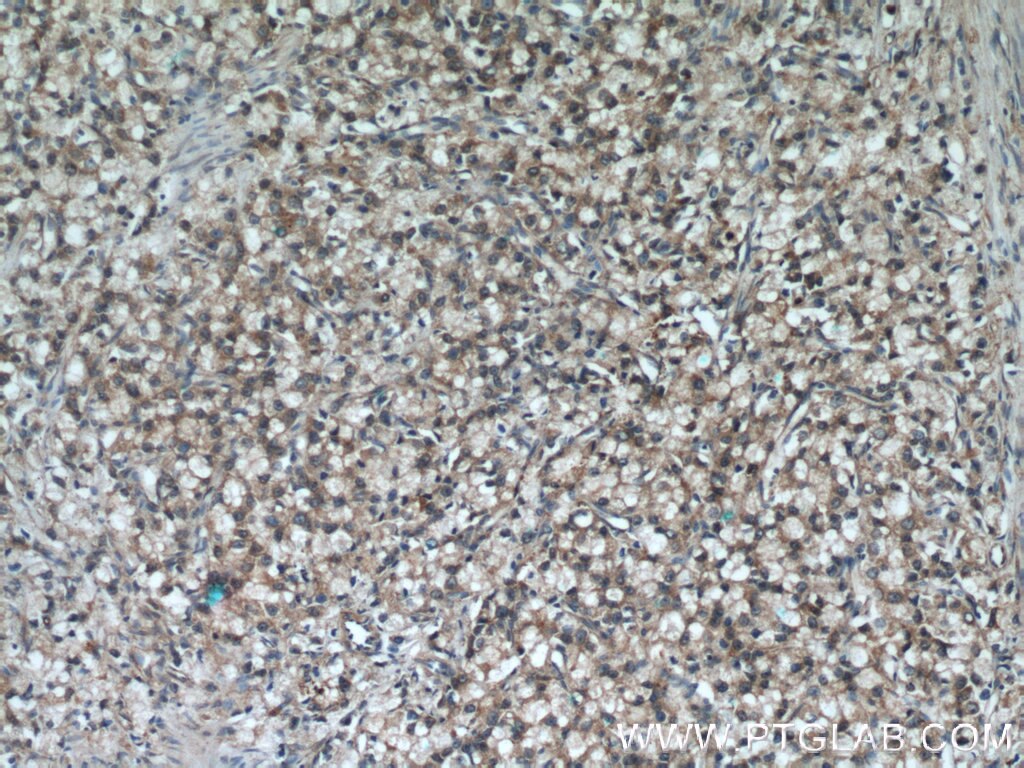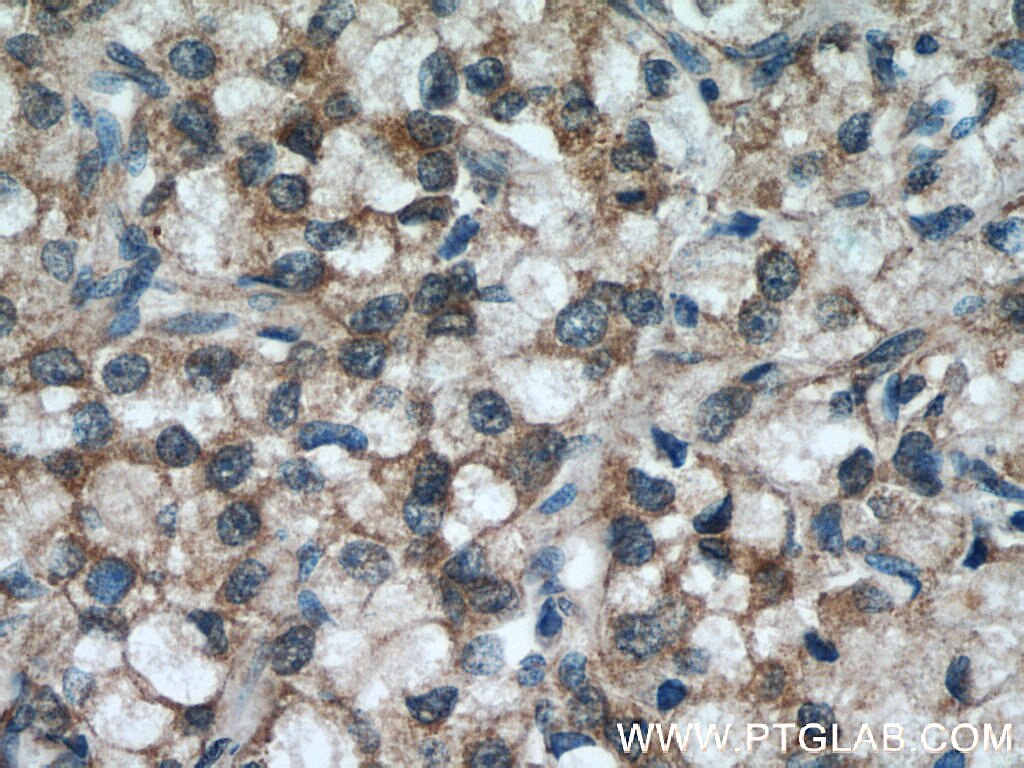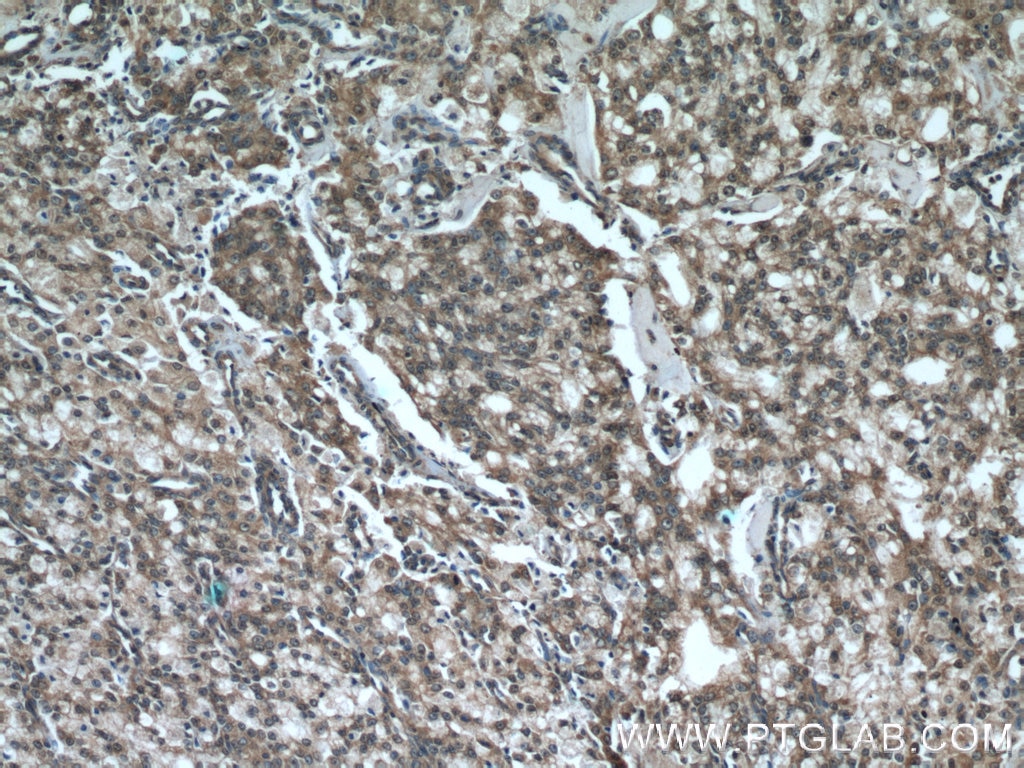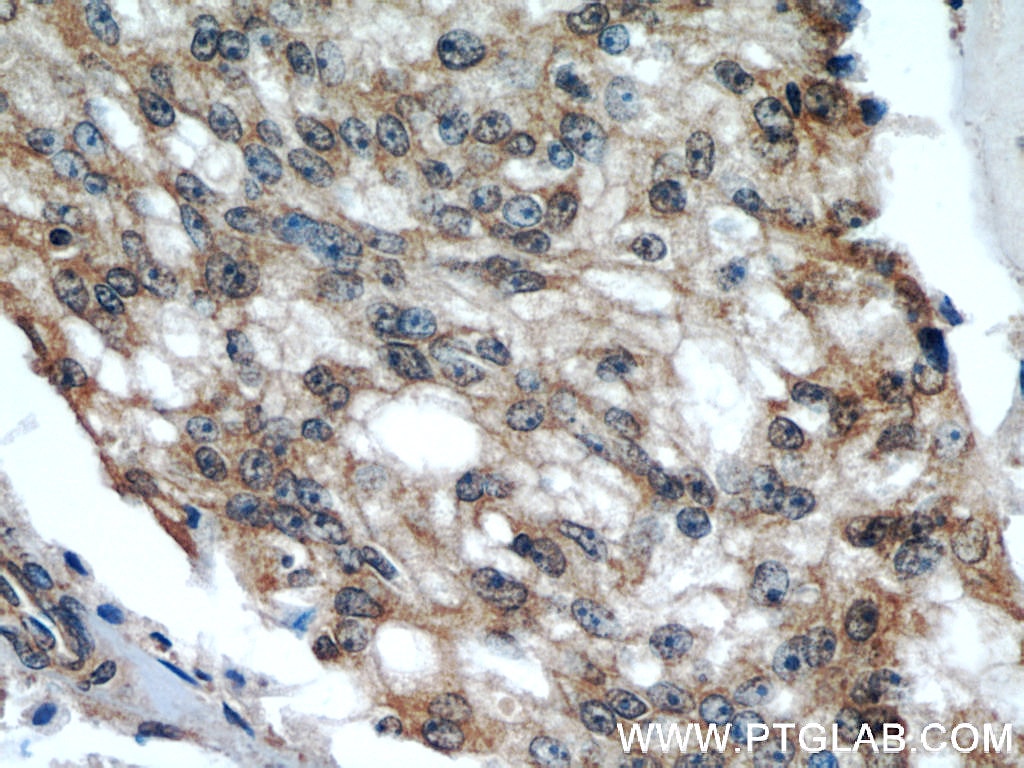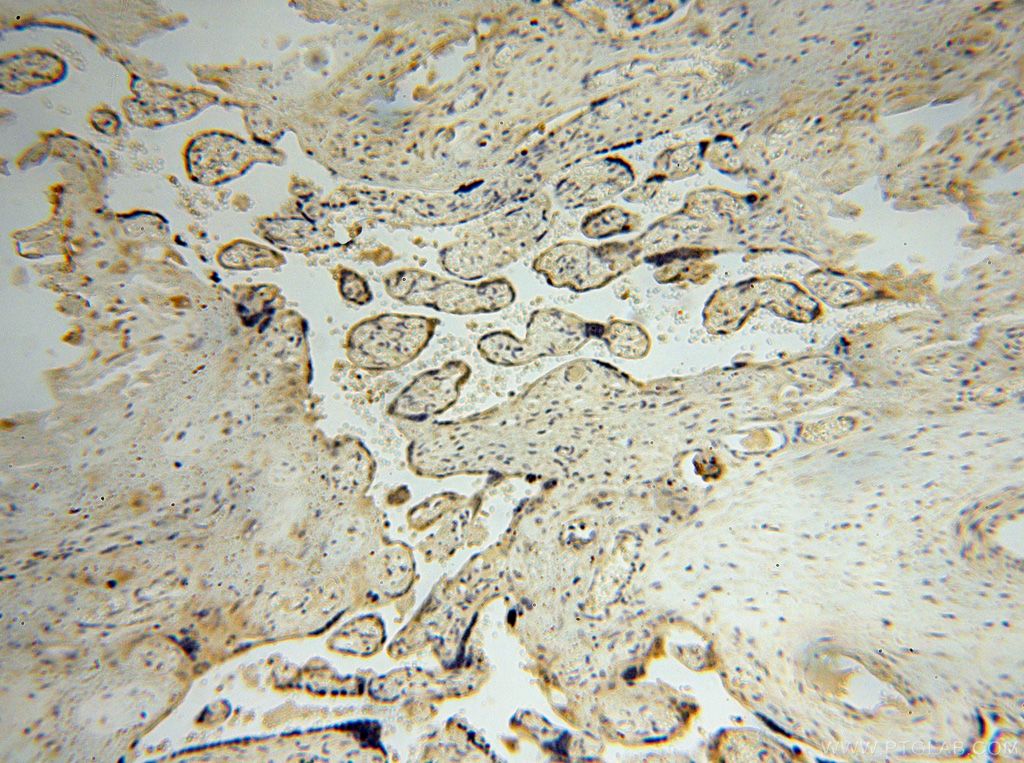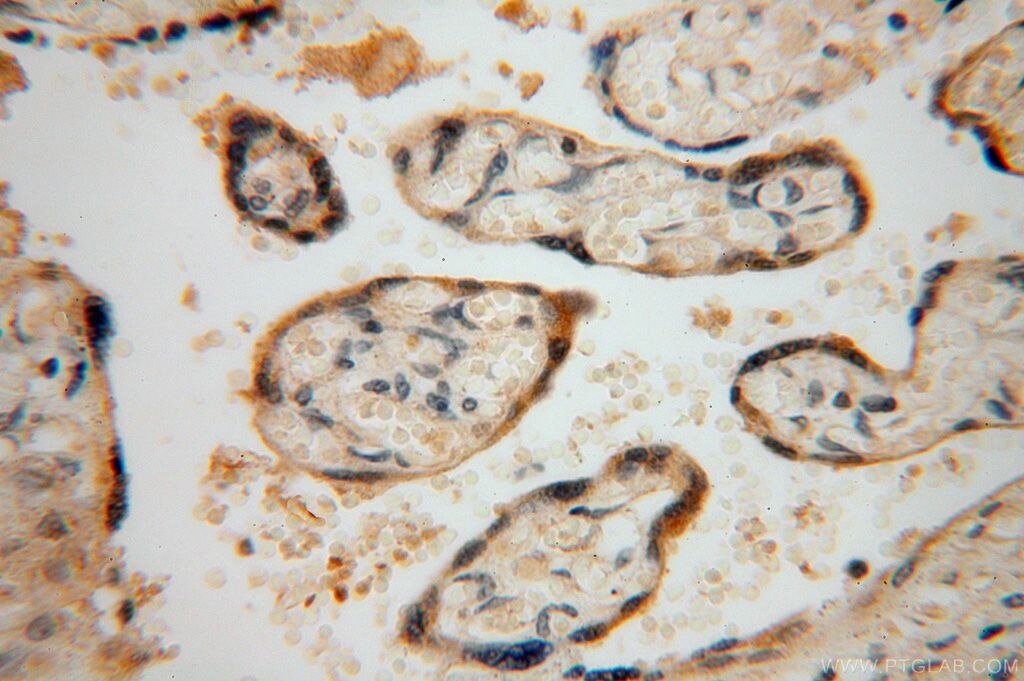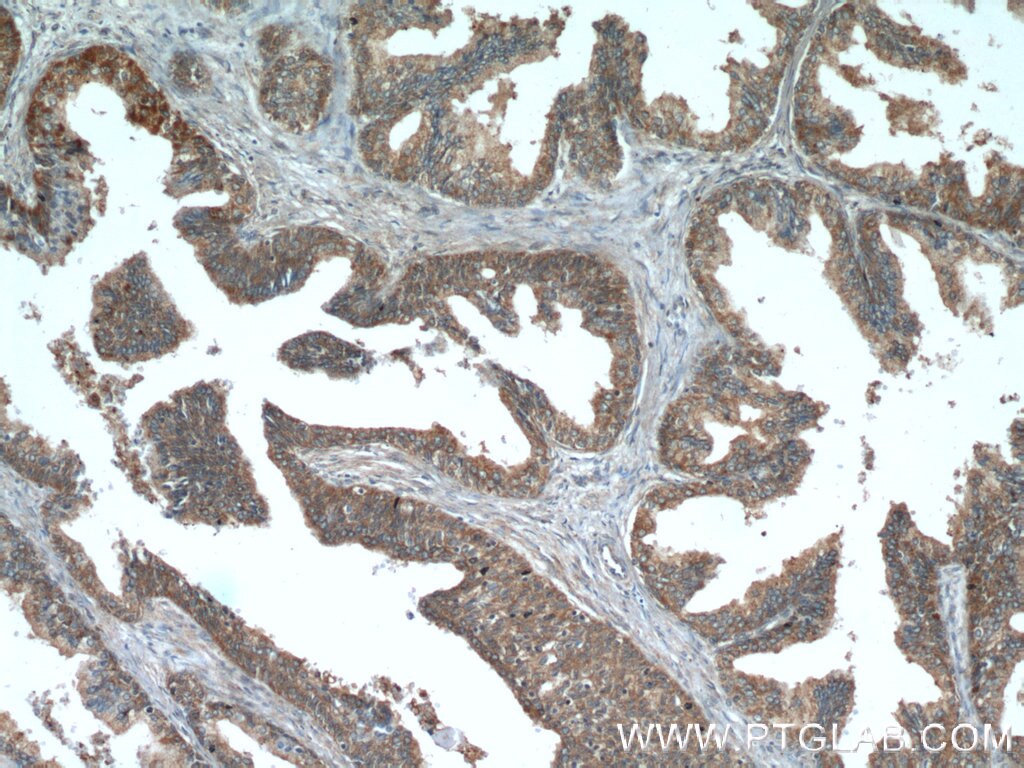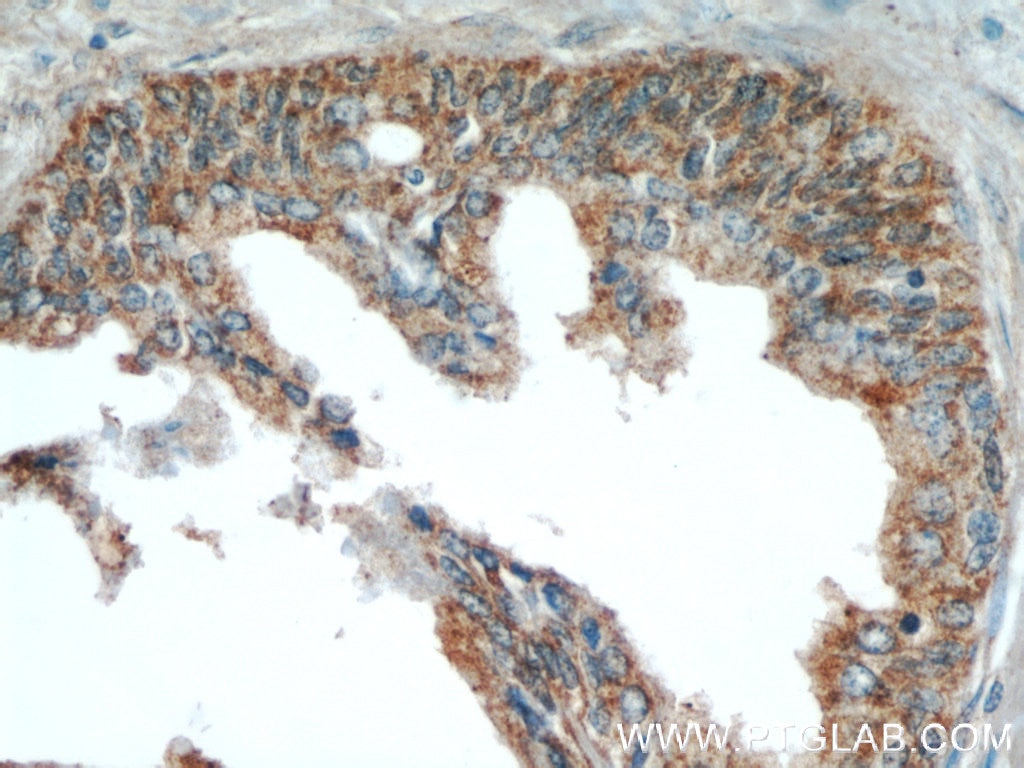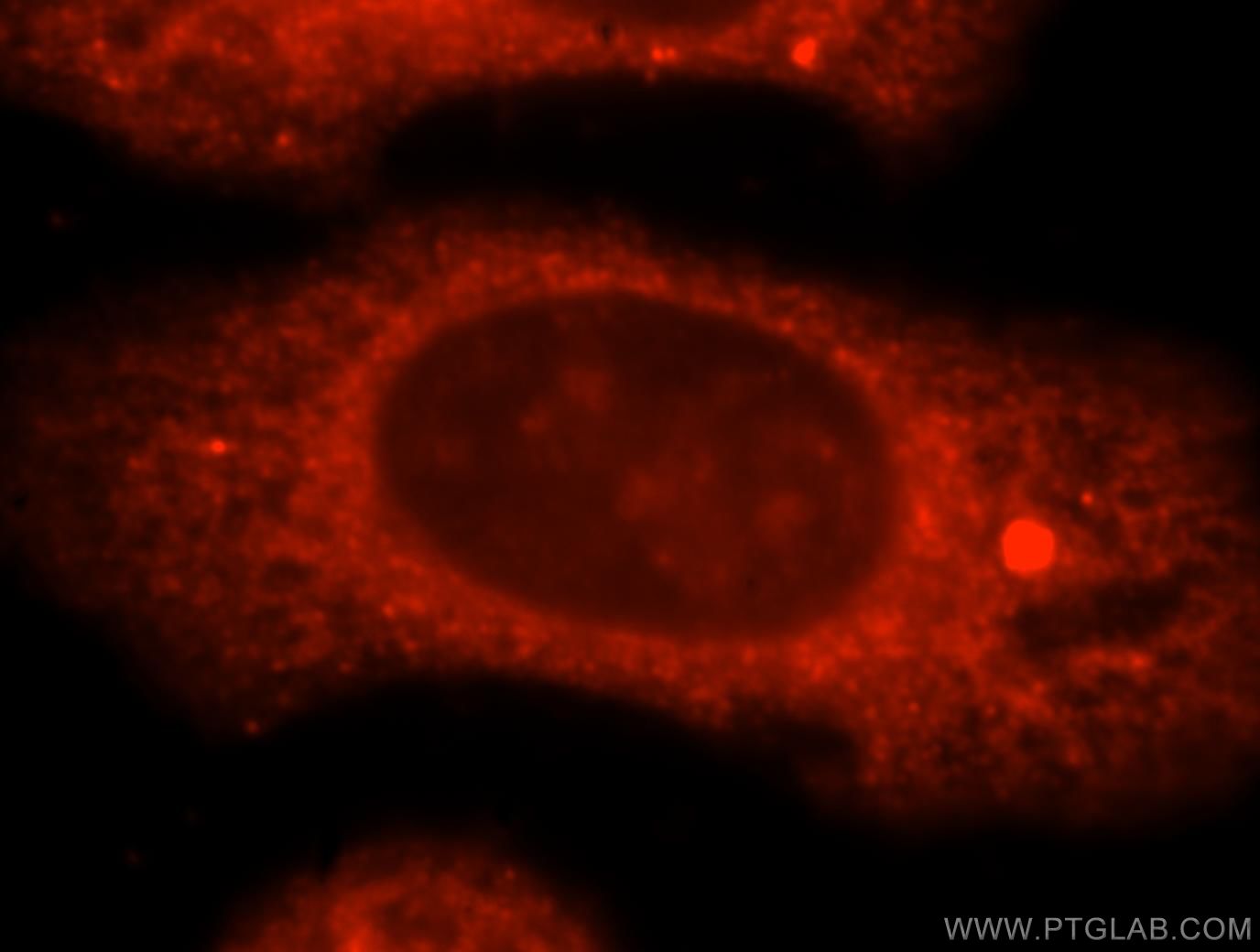- Featured Product
- KD/KO Validated
ODC1 Polyklonaler Antikörper
ODC1 Polyklonal Antikörper für WB, IF, IHC, ELISA
Wirt / Isotyp
Kaninchen / IgG
Getestete Reaktivität
human, Maus, Ratte und mehr (1)
Anwendung
WB, IHC, IF/ICC, ELISA
Konjugation
Unkonjugiert
Kat-Nr. : 17003-1-AP
Synonyme
Geprüfte Anwendungen
| Erfolgreiche Detektion in WB | Ratten-Thymusgewebe, Maus-Thymusgewebe |
| Erfolgreiche Detektion in IHC | humanes Prostatahyperplasie-Gewebe, humanes Plazenta-Gewebe, humanes Prostatakarzinomgewebe Hinweis: Antigendemaskierung mit TE-Puffer pH 9,0 empfohlen. (*) Wahlweise kann die Antigendemaskierung auch mit Citratpuffer pH 6,0 erfolgen. |
| Erfolgreiche Detektion in IF/ICC | HepG2-Zellen |
Empfohlene Verdünnung
| Anwendung | Verdünnung |
|---|---|
| Western Blot (WB) | WB : 1:200-1:1000 |
| Immunhistochemie (IHC) | IHC : 1:20-1:200 |
| Immunfluoreszenz (IF)/ICC | IF/ICC : 1:10-1:100 |
| It is recommended that this reagent should be titrated in each testing system to obtain optimal results. | |
| Sample-dependent, check data in validation data gallery | |
Veröffentlichte Anwendungen
| KD/KO | See 3 publications below |
| WB | See 12 publications below |
| IHC | See 4 publications below |
Produktinformation
17003-1-AP bindet in WB, IHC, IF/ICC, ELISA ODC1 und zeigt Reaktivität mit human, Maus, Ratten
| Getestete Reaktivität | human, Maus, Ratte |
| In Publikationen genannte Reaktivität | human, Hausschwein, Maus |
| Wirt / Isotyp | Kaninchen / IgG |
| Klonalität | Polyklonal |
| Typ | Antikörper |
| Immunogen | ODC1 fusion protein Ag10699 |
| Vollständiger Name | ornithine decarboxylase 1 |
| Berechnetes Molekulargewicht | 461 aa, 51 kDa |
| Beobachtetes Molekulargewicht | 51 kDa |
| GenBank-Zugangsnummer | BC025296 |
| Gene symbol | ODC1 |
| Gene ID (NCBI) | 4953 |
| Konjugation | Unkonjugiert |
| Form | Liquid |
| Reinigungsmethode | Antigen-Affinitätsreinigung |
| Lagerungspuffer | PBS with 0.02% sodium azide and 50% glycerol |
| Lagerungsbedingungen | Bei -20°C lagern. Nach dem Versand ein Jahr lang stabil Aliquotieren ist bei -20oC Lagerung nicht notwendig. 20ul Größen enthalten 0,1% BSA. |
Hintergrundinformationen
Ornithine decarboxylase (ODC) is also named as ODC1 and belongs to the Orn/Lys/Arg decarboxylase class-II family. It catalyzes the conversion of ornithine to putrescine, the first step and a major site of regulation of polyamine biosynthesis. The level of ODC is known to be controlled at several sites, namely transcription, translation, and enzyme degradation. Polyamines can stimulate the degradation of ODC as a type of negative feedback control (PMID:8486633). This protein can be phosphorylated in vivo (PMID:8798774). ODC1 can form a homodimer and only the dimer is catalytically active, as the active sites are constructed of residues from both monomers (PMID: 10623504). The molecular mass of ODC1 is 51 kDa, and the homodimer is 106 kDa.
Protokolle
| PRODUKTSPEZIFISCHE PROTOKOLLE | |
|---|---|
| WB protocol for ODC1 antibody 17003-1-AP | Protokoll herunterladen |
| IHC protocol for ODC1 antibody 17003-1-AP | Protokoll herunterladenl |
| IF protocol for ODC1 antibody 17003-1-AP | Protokoll herunterladen |
| STANDARD-PROTOKOLLE | |
|---|---|
| Klicken Sie hier, um unsere Standardprotokolle anzuzeigen |
Publikationen
| Species | Application | Title |
|---|---|---|
NPJ Precis Oncol Integrated multiomics analysis of hepatoblastoma unravels its heterogeneity and provides novel druggable targets | ||
NPJ Precis Oncol Integrated multiomics analysis of hepatoblastoma unravels its heterogeneity and provides novel druggable targets.
| ||
Am J Physiol Cell Physiol The Regulation of Polyamine Pathway Proteins in Models of Skeletal Muscle Hypertrophy and Atrophy - a potential role for mTORC1. | ||
Life Sci Ornithine is a key mediator in hyperphosphatemia-mediated human umbilical vein endothelial cell apoptosis: Insights gained from metabolomics. | ||
Arch Pharm Res Spermidine rescues proximal tubular cells from oxidative stress and necrosis after ischemic acute kidney injury.
| ||
